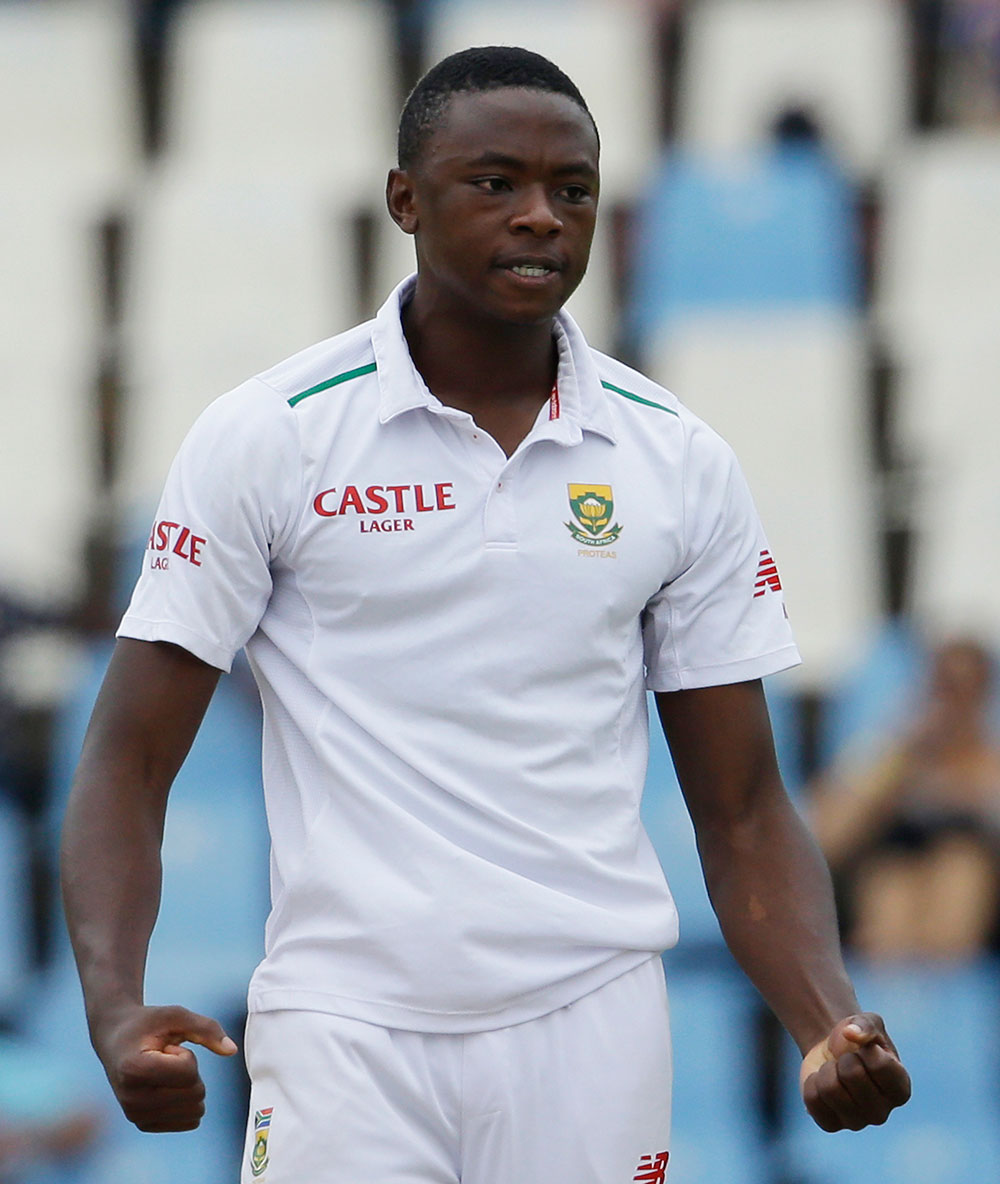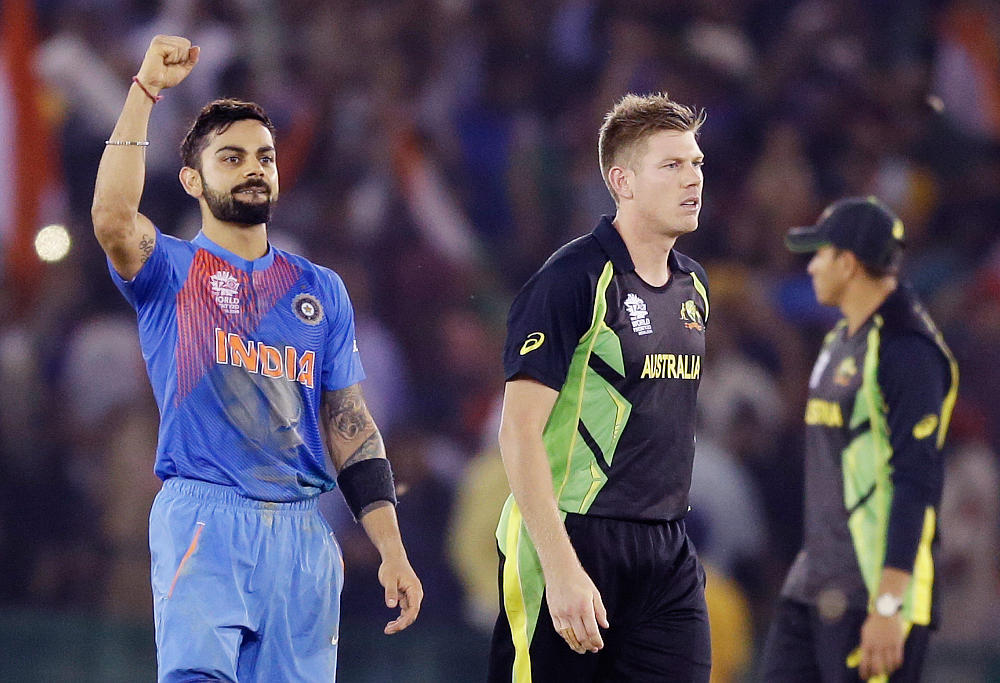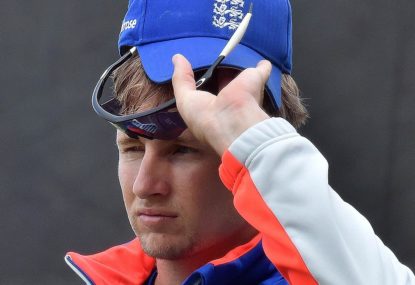England have lost their past eight ODI series against Australia and India combined. That’s clearly been overlooked amid the clamour to label them as favourites for the Champions Trophy which starts on Thursday.
After being humiliated in the 2015 World Cup, which was dominated by Australia, England have made great strides as an ODI outfit over the past two years.
England still have a lot to prove, though, with their victory in the past week against South Africa their first series win against one of the ODI heavyweights (SA, Australia and India) since 2012.
England have lost their past four ODI series against reigning World Cup champions Australia, and their past four series against defending Champions Trophy winners India.
It is those two sides, who both have fine records at major limited overs tournaments, who are shaping as the biggest obstacles for England, who have never won a single major one day tournament.
South Africa have been an elite ODI side for many years, and are in the mix to lift the Champions Trophy, but they’ve been weakened by several setbacks in recent months.
The Proteas pace attack long has been lethal. But it looked very vulnerable against England due to the absences of Dale Steyn, who is out injured, Kyle Abbott who has quit international cricket for English county, and Morne Morkel who seems to be a victim of the country’s new race quota.
Without Steyn and Abbott, and with Morkel a chance to be left out for quota reasons, huge responsibility has been heaved onto the back of pace prodigy Kagiso Rabada. The intimidating quick is one of the most gifted bowlers in the world.
He’s also only 22 years old, making him very young to spearhead an attack in a major tournament.

(AP Photo/Themba Hadebe)
While the Proteas’ bowling doesn’t look as fearsome as usual, their batting is immense. In Quentin de Kock, Hashim Amla, Faf du Plessis and AB de Villiers they have, without question, the best top four in world cricket.
The Proteas and England have the two best batting line-ups in the tournament. After playing hyper-conservative ODI cricket for years, England are now the most dynamic batting side in the format.
Some ODI teams look to conserve wickets, build a platform and then launch an assault in the final 10-15 overs. England, meanwhile, often seek to force the pace throughout their whole innings, trusting that if this aggression backfires their very deep batting line-up will rescue them.
This approach, combined with ultra-flat home wickets, has made them the highest-scoring team in ODIs since the last World Cup. The English pitches are again expected to overflow with runs in this tournament, with England backing themselves to defeat their opponents in high-scoring shoot-outs.
England must rely on their batting to blast the opposition because of the fragility of their bowling attack. In this way they are more one-dimensional than Australia and India, who have better balanced line-ups.
England don’t have a single bowler who would make Australia’s starting XI. And, at best, England might squeeze one bowler into the Indian XI.
For their first match against Bangladesh on Thursday, England look likely to field a six-man attack of Mark Wood, Chris Woakes, Liam Plunkett, Adil Rashid, Moeen Ali and Ben Stokes. To illustrate the weakness of that attack, they have a combined ODI bowling average of 35, with not one of them averaging better than 31.
Compare that to Australia who have three bowlers who average 25 or less in ODIs (Mitchell Starc, Josh Hazlewood and Pat Cummins).
India, meanwhile, have arguably their best, most rounded ODI attack of all time. They’ve always had good tweakers and that’s still the case, with Ravi Ashwin and Ravi Jadeja offering them a solid and very experienced spin combo.
It’s in the pace department where India have improved markedly. Mohammed Shami and Umesh Yadav were two of the superstars of the last World Cup, combining for 35 wickets at an average of 17.
Meanwhile, 23-year-old Jasprit Bumrah has made a phenomenal start to his international career, taking 55 wickets at 19 in limited overs cricket.
India also have a good sixth bowler in Hardik Pandya, who has impressed in his brief international career. All together that gives India a seriously good bowling unit. And their batting, as usual, is dripping with class and power.
Captain Virat Kohli is a wizard who could win the tournament off his own blade if he gets on a roll. Rohit Sharma and Shikhar Dhawan are the second-best opening pair in the format, behind only de Kock and Amla.

(Photo: AP)
Then there’s MS Dhoni and Yuvraj Singh who, while in the twilight of their careers, are two of their country’s greatest-ever ODI cricketers.
India’s batting line-up is not as deep as England’s, as not as explosive either. What India do have is a better attack than the hosts and the confidence gained from years of excellent performances at major limited overs tournaments.
Australia, too, are not as dominant with the bat as England. Yet they still are a very good batting side and have comfortably the best attack in ODI cricket.
In the last World Cup, amid heavy media and fan focus on the exploits of big-hitting batsmen, it was the four teams with the best bowling units which made the semis and the team with the finest attack with lifted the trophy.
New Zealand were one of those four teams. The Kiwis were sensational en-route to their first-ever World Cup final appearance before being hammered by Australia.
They remain a good 50-over side and are not without a chance of winning the Champions Trophy.
It does appear, however, that New Zealand now lean too heavily on champion quick Trent Boult.
The Kiwis have no other bowler in their squad who is even close to being world-class, thanks to the baffling omission of talented seamer Matt Henry.
Of the remaining teams, it is hard to see any of Bangladesh, Pakistan or Sri Lanka having a major impact in this tournament. Pakistan have one of their weakest-ever ODI line-ups, a team which is okay with the ball but routinely collapses with the bat.
Sri Lanka, too, are at a low point in the proud history of their ODI team, which for so many years was a big threat at one day tournaments.
Bangladesh are on an upward curve, having reached an all-time high ODI ranking of sixth, ahead of Sri Lanka, Pakistan and the West Indies, who couldn’t even qualify for this eight-team tournament. But the Tigers have a worrying habit of falling apart at pivotal moments in all three formats.
Who, then, is my tip to win the Champions Trophy? I’m predicting Australia and India to face off in the final. Picking the winner of that match is very difficult.
In the end I’m swayed by Australia’s phenomenal record in one-day tournaments, having won four of the past five World Cups and two of the last three Champions Trophy events. In ODIs, Australia have a track record of excelling when it matters most.































































































